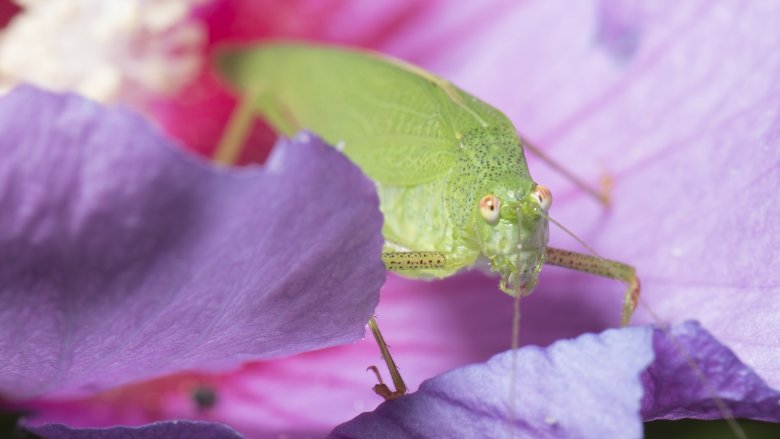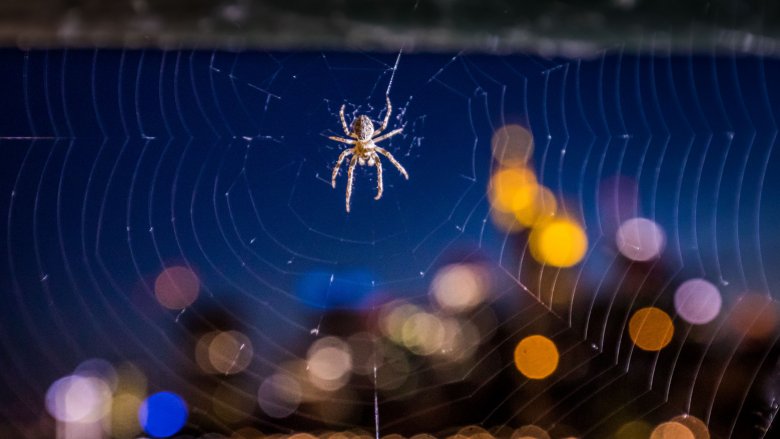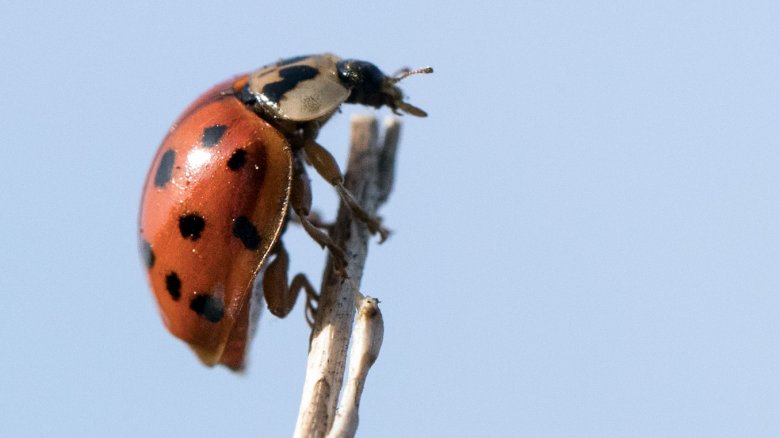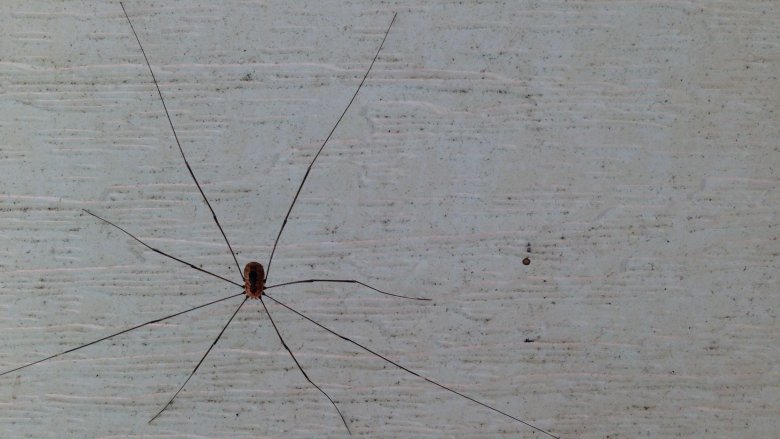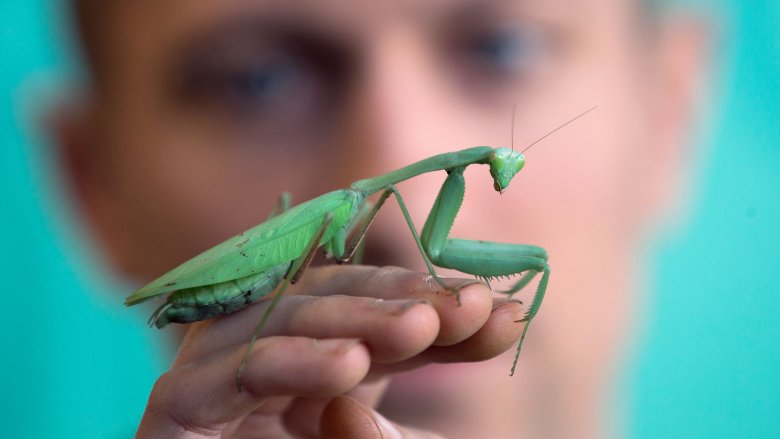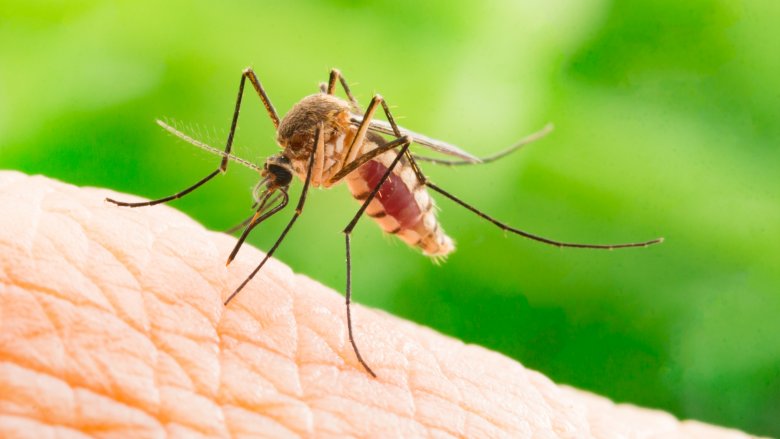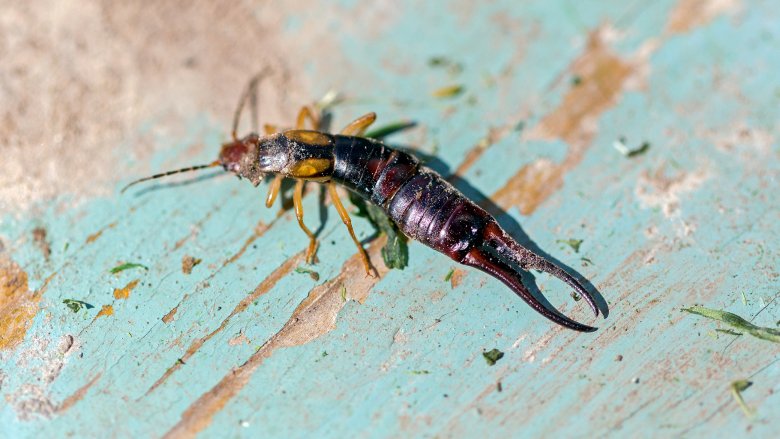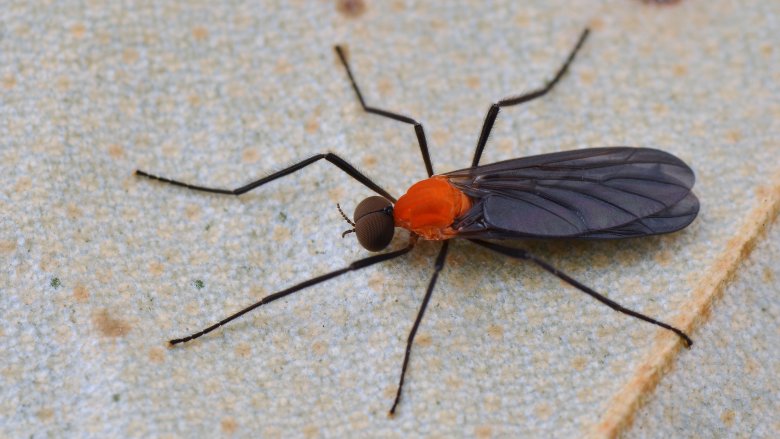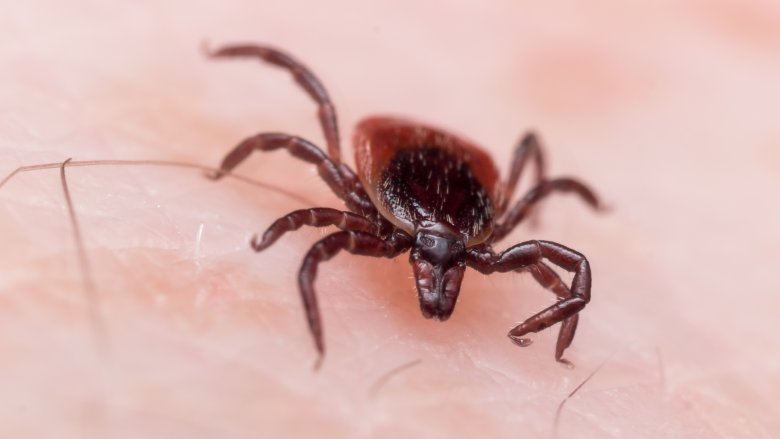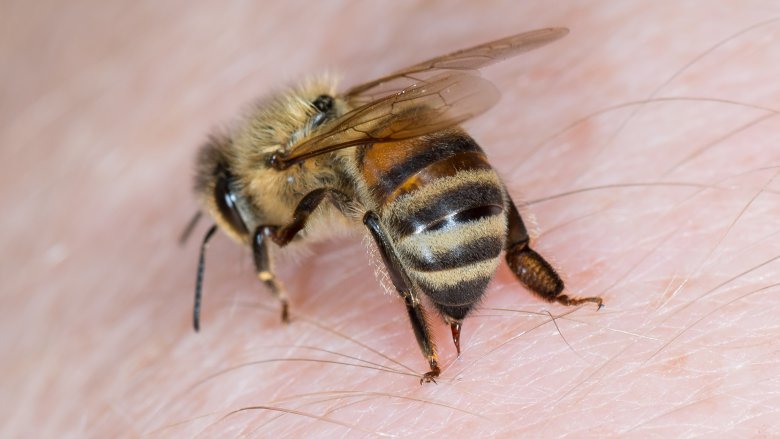False Facts About Creepy-Crawlies You Always Thought Were True
Some insects are beautiful. Some you could not want further away from you. We all flinch when we feel a creepy-crawly on our body, but no matter how you feel about them, there's a good chance you believe a few urban legends about them. Here are just some of the examples that paint these little bugs in the wrong way.
You swallow eight spiders a year in your sleep
We all have a friend of a friend who woke up one night and pulled a spider leg out of their mouth. According to rumor, that is solid proof that we swallow up to eight spiders a year in our sleep. This urban legend has been around forever, but it doesn't even have a disembodied spider leg to stand on.
According to Scientific American, while there are a variety of spiders that live in houses, they would rarely make it to your bed since it isn't a natural place for them to find prey. (If you have bed bugs, spiders might come to bed with you, but spiders aren't the problem anymore at that point.) What's more, the natural vibrations emanating from our bodies warn spiders not to hang out on us.
Even if a spider did end up on you, it probably wouldn't head for your mouth. If your mouth is open, you're probably snoring, which would make more of those scary vibrations they hate. And a decent-sized spider crawling across your face would probably wake you up before it made it to your mouth anyway. So no matter what that friend of a friend claims, the science says they probably didn't get the chance to swallow even one spider, let alone eight every year.
You can tell a ladybug's age by its spots
As children we all sang the song, "Ladybug, ladybug fly away home, your house is on fire and your children are gone." As an adult, you realize this is a pretty messed-up rhyme. Who is setting fires to all these plants? Why are we taunting the ladybug that landed on us with death of her family? Who ever thought "home" rhymed with "gone"? We may never know these answers, but what we do know is that you can't tell a ladybug's age by its spots.
Many ladybugs (or ladybirds, for you Brits) do have spots, but almost none of them come close to estimating the bug's age. The BBC says that's because most ladybugs don't even live longer than a year at the best of times. If you see a ladybug with seven spots, it's just a ladybug with seven spots. Other ladybugs could have no spots at all. The only things ladybugs need to be ladybugs are 11 segments on their antennae and four segments on their legs. They are also extremely promiscuous insects that lay cannibalistic larvae, making them a lot less cute than you probably thought.
Daddy long-legs are venomous
You probably feel like you know daddy long-legs pretty well considering how many you've seen in your life. These little guys love hanging out in houses, so you probably assumed you'd gobbled a few of them in your sleep by now. (Good thing we busted that myth, huh?) In reality, everything you think about them is probably wrong.
To start off with, according to KQED, they aren't even spiders. They come from the same ancestor but are a totally different kind of arachnid (as are scorpions). You can tell the difference by looking at how many body sections they have: the similar-looking cellar spider has two, while daddy long-legs have one.
But what about the rumor that daddy long-legs would be the deadliest "spiders" to humans if only they had fangs strong enough to break our skin? It turns out that they have neither venom nor fangs, which kind of puts the kibosh on that idea. They do have relatively harmless front claws that can "bite" humans, but they usually use them on fruit. In the end, these guys are just poor innocent victims of the urban legend smear machine.
It's illegal to kill a praying mantis
This rumor has been around since at least the 1950s, according to Snopes. Unfortunately, no one seems to know just how it started. Regardless, the legend says that praying mantises are an endangered species and that killing one carries a $50 fine. There are a few things wrong with this. First, the insect has never been endangered. Second, if it was you should probably be charged a heck of a lot more than $50 for killing one. We're not saying you should be going around stomping on every praying mantis you see — they're actually really useful bugs that you want to have around — but if you accidentally step on one or run over one in your car, you don't have to be worried that the police are suddenly going to descend on you.
While there's no officially known reason why people think this, ThoughtCo has some ideas. People in ancient southern Africa, Greece, and Egypt all saw the benefit of these creatures and venerated them to some extent. The Shaolin martial arts have movements based on the insect. Or it could just be down to the fact that gardeners like having them around to eat bad bugs.
Mosquitoes can transmit HIV
This urban legend makes sense when you think about it. After all, if you can contract HIV from sharing needles, why wouldn't you be able to catch it from nature's version of those annoying little passed-around needles, mosquitoes? They can spread malaria from person to person, so why would HIV be any different?
Thankfully, biology saves us on this one. Scientific American says it all has to do with what goes on inside a mosquito's tummy. When someone with HIV shares a needle, the blood that stayed on the needle goes into the next body and the virus attacks the new human's T cells where it starts to replicate, giving them the virus, too. But when blood goes into a mosquito, it stays in its stomach where there are no T cells for it to use; it dies off. When it gets to the next human, there's simply no disease left to pass on.
Meanwhile, malaria is able to survive in a mosquito and will go to the bug's salivary glands. Mosquitoes inject saliva when they bite you, so they're able to pass that deadly disease from human to human, mostly in warm climates. So it's still probably best to wear bug spray and swat as many of the darn things as you can.
Earwigs burrow in your ear and eat your brain
If this urban legend about earwigs were true, they would be one of the most terrifying bugs on the planet. But the idea that these little guys crawl into your ears and use their pincers to munch your brain to insanity or death is just crazy, thankfully. The weird thing is that many cultures have believed some variation on this myth for hundreds of years, according to ThoughtCo. Snopes says it may have existed since the year 1000 A.D. The origin might simply be from the fact that they kind of smell like earwax, as well as from the pincers attached to their butts. The claim may have gotten a boost when famous explorer John Hanning Speke, who discovered the source of the Nile, wrote about getting a bug stuck in his ear and trying unsuccessfully to get it out. Then it entered pop culture by way of the movie Mountains of the Moon and an episode of Rod Serling's Night Gallery.
The fact of the matter is that no insect can get further into your head than your ear canal since there are too many bones in there. They might be annoying and scratch around while they're in there, but they can't actually bore into your brain. They probably won't lay eggs in there either. Chances are they'll feel trapped and desperately try to get out. It's not fun for either of you.
Lovebugs come from a science experiment gone wrong
If you are from the southeast United States, you're probably familiar with lovebugs. They look like a six-legged cross between a fly and a black widow spider. According to the University of Florida's website, these red and black creepy-crawlies are also known as March flies, double-headed bugs, honeymoon flies, united bugs, and "some expletives that are not repeatable." That last bit might be due to how they swarm during the few months they live in the spring and summer, making them a huge nuisance.
But is there any truth to the rumor that these annoying bugs were the result of a science experiment gone wrong? Also according the home of the Gators, the answer is no, they are not. That hasn't stopped the spread of the story that sometime in the 1950s the University of Florida developed a bug with no function other than just getting all over humans and cars and driving people crazy. In reality, nature herself created these pests, and they are actually good for the environment, no matter how much you might hate them.
Always remove a tick by twisting it clockwise
When you discover a tick on you, there's little time to think about how you need to carefully remove it — you just want it off now. But you might remember in the back of your mind some instruction you once heard that it was important to turn the tick clockwise as you remove it.
The Straight Dope points out that unlike screws, ticks are actually not threaded and so twisting doesn't really help. In fact, you shouldn't twist them at all. Nor should you cover them in other supposed remedies like Vaseline, gasoline, or nail polish, or try to burn them with a match. And you certainly shouldn't burn them after you doused them in that stuff because you'd be more likely to catch on fire than remove the thing.
The correct way to remove a tick is to cover it in hydrogen peroxide or other cleaner, then take a pair of tweezers and pull from as close to the head as possible. If you squeeze any higher up, you're more likely to leave part of the tick attached to you, which nobody wants.
Pennies can cure bee stings
Bee stings are the worst. How can such a little creature cause so much pain? When you do get stung, usually as a child after running around outside like a crazy person, you'll do almost anything to make the pain stop. And rumor has it that the fastest way to do this is stick a penny on the spot. The copper in the coin supposedly eases the throbbing because something something science!
Unfortunately, science actually says something something nope. According to Dr. David Amran, a Houston-based allergist (via station KHOU) copper doesn't really do anything to heal bee stings. And even if it did, pennies are zinc plated in thin copper, meaning they wouldn't be able to help much. This old wives' tale comes from the idea that bee stings are acidic and that copper is basic, balancing out the reaction and dulling the pain. In reality, bee and wasp stings hurt because of a protein and not because of where they land on the pH scale. Still, your best bet is just to run away screaming every time you see a bee.
Butterflies can't fly if you touch their wings
Butterflies almost taunt you with how pretty they are. Even though you know they're delicate, when you're a kid, you want to grab them and rub them all over your face. OK, maybe you won't do anything that drastic, but the iridescent colors make you want to catch one in your hand and gently stroke its wings. The problem is that those wings are covered in scales that look like powder, and if you rub them off they the poor creature can't fly anymore ... right?
According to Science Focus, butterflies and moths don't actually need those powdery scales to fly. The only problem is that if you actually touch them enough to wipe off the scales, you probably injured the wing itself and might have rendered the creature flightless that way. The Virtual Museum of Canada goes so far as to say that you might only cause damage that butterflies would normally get brushing leaves and things. Sure, it's not great to rub your fingers all over an innocent butterfly, but if you're careful you don't have to feel too guilty.
